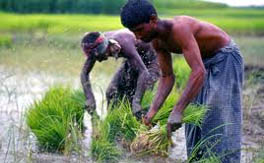Climate change in Indo-Gangetic agriculture: recent trends, current projections, crop-climate suitability, and prospects for improved climate model information

This is an assessment of recent trends and projected future changes in climate, specifically focused on the Indo-Gangetic Plains (IGP).
The climate of the Indo-Gangetic Plain is investigated and the implications of climate change on agriculture are assessed. The ability of General Circulation Models (GCMs) to reproduce the observed climate was investigated, to establish how reliable future climate and associated crop growth projections might be. Climate in the region is controlled largely by the southwest monsoon. Very few if any climate models capture both monsoon rainfall amount and timing accurately, and the most robust approach to assessing climate change regionally involves using all model projections available. During this century, mean temperature will rise at a rate greater than the global mean. Projections for changes in precipitation are varied, but the ensemble mean changes are generally positive, and more consistently positive over the Ganges than the Indus. Rain-fed agricultural suitability of all crops increases in the future, due to precipitation increases. For irrigated agriculture, maize, wheat and rice are not affected in terms of areas that are suitable for growth, except in the warmest scenarios in the 2090s, especially in the lower Indus valley.
See Also
Analysis: Effects of agricultural water and landholdings on rural livelihoods.
Report: Enhancing equity in mixed...
Report: Zero tillage in the rice-wheat...
Report: Crop-livestock interactions and livelihoods.
Feature: Climate sensitivity of Indian agriculture - do spatial effects matter?
Report: Cotton-wheat production system in South Asia.
Feature: Rain Shocked.
Feature: Climate change and its impact on agriculture.
